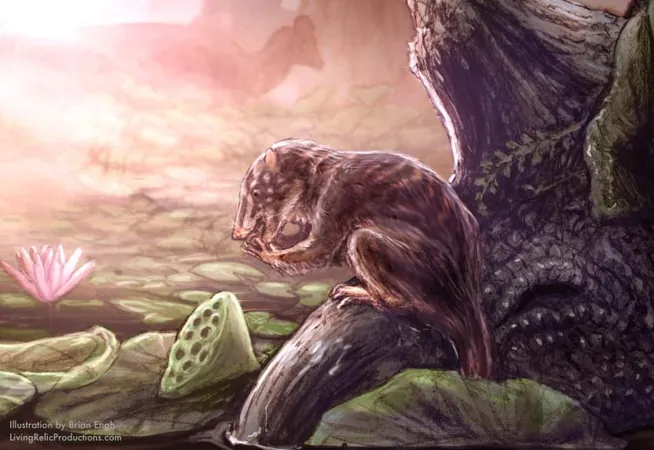
Incredible Discovery in Colorado: Meet the ‘Swamp Dweller’ That Roamed with Dinosaurs!
2024-10-23
Author: Mei
In a groundbreaking discovery, a team of paleontologists has unearthed a remarkable fossil in northwestern Colorado that dates back to the Age of Dinosaurs. This newly identified mammal, approximately the size of a muskrat, is believed to have lived in swampy landscapes around 70 to 75 million years ago—an era when a vast inland sea swirled across large sections of what is now the American West.
The Discovery
Led by Jaelyn Eberle, curator of fossil vertebrates at the University of Colorado Boulder, the team published their findings on October 23 in the prestigious journal PLOS ONE. The creature, named Heleocola piceanus (translating to “swamp dweller”), was identified from a fragment of jawbone and three molars.
Insights from the Find
Eberle expressed awe at this rare find, noting the scarcity of mammal fossils from the Late Cretaceous period in Colorado. “Colorado is a great place to find fossils, but mammals from this time period tend to be pretty rare,” she shared. This discovery not only sheds light on the ecology of ancient Colorado but also emphasizes the importance of studying lesser-known species that lived alongside the formidable dinosaurs, such as the massive Tyrannosaurus rex and Triceratops.
Ecological Significance
Interestingly, while H. piceanus might seem small next to these colossal reptiles, it was relatively large for mammals of its time, weighing an estimated two pounds or more. In the grand scope of Cretaceous mammals, this makes it significant, especially since most contemporaneous mammals were about the size of modern-day mice or rats. Eberle pointed out that H. piceanus probably feasted on plant material, possibly supplemented by insects or small animals.
A Treasure Trove Site
The excavation site near Rangely has become a treasure trove for paleontologists. Since 2008, John and ReBecca Hunt-Foster have been conducting summer digs in the area, yielding insights into a prehistoric landscape that resembled the bayous of Louisiana, where turtles, duck-billed dinosaurs, and huge crocodiles thrived. This lush environment provided a rich habitat for a variety of species, many of which we continue to learn about through fossil evidence.
A Moment of Discovery
John Foster recalled the moment he found the jaw fragment in 2016, noting its impressive size and immediate impact. This fossil not only contributes to our understanding of mammalian evolution but also underscores the vitality of the ecosystems present during the Late Cretaceous period.
Importance of Ancient Mammals
Experts agree that this discovery is a vital reminder not to overlook ancient mammals in the shadow of their dinosaur counterparts. “They played a critical role in the ecosystems of their time,” Eberle emphasized, adding that recent advances in paleontology are revealing larger mammals from this era than previously thought.
Preserving Fossil Sites
Hunt-Foster urged outdoor adventurers to preserve our paleontological treasures. “If you encounter vertebrate fossils during your hikes, please refrain from collecting them. Instead, document your findings, take photographs, and notify a local museum or public land representative,” she advised. Such actions help protect the invaluable scientific data these fossils represent and ensure that future generations can continue to uncover the rich history of our planet.
Conclusion
This extraordinary discovery is just one of many exciting finds emerging from the fossil-rich landscapes of the Mountain West, reminding us that even in the era of dinosaurs, mammals were carving out their niche in this diverse and ever-changing world.


 Brasil (PT)
Brasil (PT)
 Canada (EN)
Canada (EN)
 Chile (ES)
Chile (ES)
 España (ES)
España (ES)
 France (FR)
France (FR)
 Hong Kong (EN)
Hong Kong (EN)
 Italia (IT)
Italia (IT)
 日本 (JA)
日本 (JA)
 Magyarország (HU)
Magyarország (HU)
 Norge (NO)
Norge (NO)
 Polska (PL)
Polska (PL)
 Schweiz (DE)
Schweiz (DE)
 Singapore (EN)
Singapore (EN)
 Sverige (SV)
Sverige (SV)
 Suomi (FI)
Suomi (FI)
 Türkiye (TR)
Türkiye (TR)